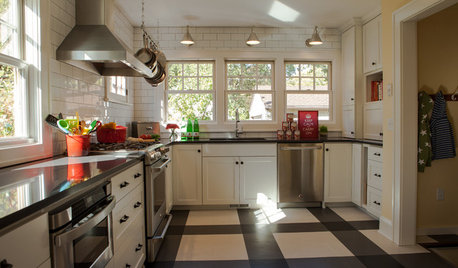Hot water heater for radiant floor heat
peace_rose
14 years ago
Related Stories

FLOORSFloors Warm Up to Radiant Heat
Toasty toes and money saved are just two benefits of radiant heat under your concrete, wood or tile floors
Full Story
FLOORSIs Radiant Heating or Cooling Right for You?
Questions to ask before you go for one of these temperature systems in your floors or walls (yes, walls)
Full Story
GREAT HOME PROJECTSHow to Add a Radiant Heat System
Enjoy comfy, consistent temperatures and maybe even energy savings with hydronic heating and cooling
Full Story
GREAT HOME PROJECTSHow to Add a Solar Water Heater
Lower energy bills without a major renovation by putting the sun to work heating your home’s water
Full Story
GREAT HOME PROJECTSHow to Switch to a Tankless Water Heater
New project for a new year: Swap your conventional heater for an energy-saving model — and don’t be fooled by misinformation
Full Story
FLOORSWhat to Ask When Considering Heated Floors
These questions can help you decide if radiant floor heating is right for you — and what your options are
Full Story
HOUSEKEEPING5 Steps to Improve Your Heating System Now
Increase your heater's efficiency and safety for lower energy bills and greater peace of mind this winter
Full Story
KITCHEN DESIGNKitchen of the Week: Drab and Dysfunctional to Radiant in Minnesota
Clunky storage and lackluster floors get nixed in favor of open shelves, plaid vinyl and an effective kitchen work triangle
Full Story
BATHROOM DESIGNWarm Up Your Bathroom With Heated Floors
If your bathroom floor is leaving you cold, try warming up to an electric heating system
Full Story
HOUZZ TOURSHouzz Tour: Innovative Home, Heated and Cooled by Design
Meet the Hudson Passive Project, one of the most energy-efficient home designs in the world
Full Story






baymee
peace_roseOriginal Author
Related Professionals
Chanhassen Solar Energy Systems · Montclair Solar Energy Systems · Moreno Valley Solar Energy Systems · Roselle Park Solar Energy Systems · West Jordan Solar Energy Systems · Brookfield Home Automation & Home Media · Enterprise Home Automation & Home Media · New York City Home Automation & Home Media · Stamford Home Automation & Home Media · Tamiami Home Automation & Home Media · East Setauket Home Automation & Home Media · Orlando Electricians · Sierra Madre Electricians · Santa Maria Fireplaces · Ventura Fireplaceswisehvac
peace_roseOriginal Author
baymee
heimert
baymee
peace_roseOriginal Author
heimert
peace_roseOriginal Author
baymee
wisehvac
peace_roseOriginal Author